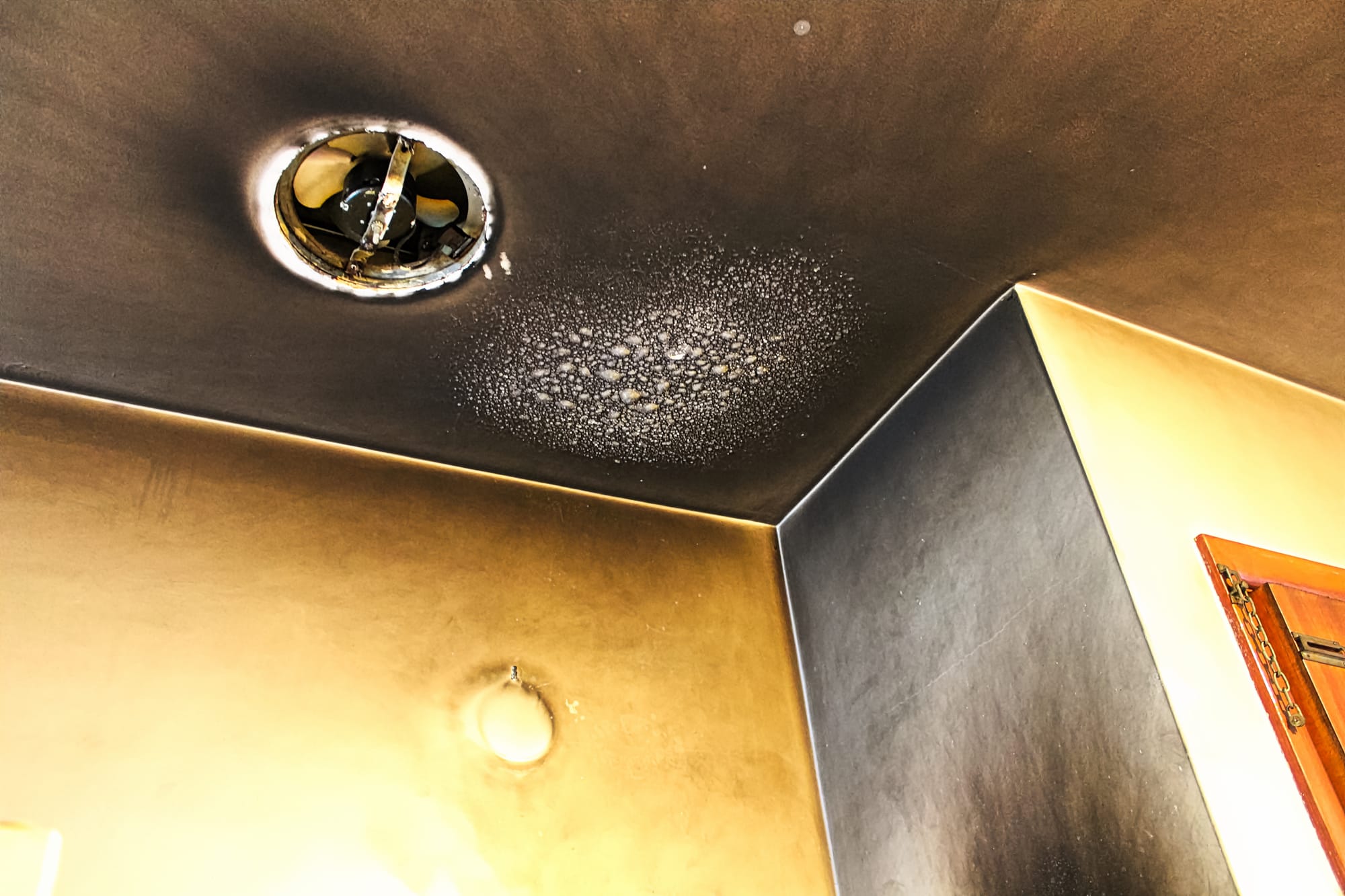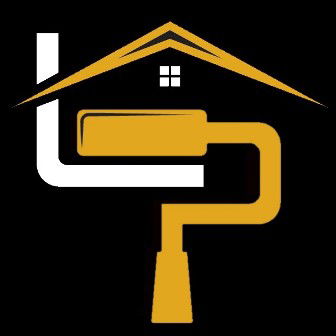How to Paint Over Smoke Stains

Key Features
- Stain and Odor Blocking: Essential steps include thorough cleaning, priming, and using high-quality odor-blocking paints to cover smoke stains effectively.
- Durable, Stain-Resistant Finishes: Semi-gloss or satin finishes resist stains and are easier to clean, providing longer-lasting results.
- Proper Preparation is Key: Scrubbing, priming, and sanding ensure a smooth and professional-looking finish.
Smoke Stained Walls... What To Do Next.
If you’ve ever dealt with smoke stains, you know they can be stubborn. Whether from a kitchen mishap, years of indoor smoking, or an unfortunate fire, smoke stains not only discolor walls but can leave an unpleasant odor behind. But don’t worry—painting over smoke stains is possible with the right preparation and tools. Here’s how to ensure a flawless finish when covering smoke-stained surfaces.
What Are the Challenges of Painting Over Smoke Stains?
Smoke stains are notorious for bleeding through regular paint, creating a blotchy finish. This happens because smoke residue contains oils and soot that bond to walls and ceilings, requiring more than just a coat of standard paint to cover. The odor from smoke can also linger beneath the surface unless treated properly.
Things to Know
- Always Use a Stain-Blocking Primer: Smoke stains will bleed through paint without proper priming.
- Clean Thoroughly Before Painting: Smoke residue can prevent paint from adhering, so a deep clean with TSP is essential.
- Consider Odor-Sealing Solutions: To tackle both stains and smells, use products specifically designed to trap smoke odor.
- Semi-Gloss and Satin Finishes Last Longer: These finishes are easier to clean and provide better stain resistance than flat finishes.
What Preparation Is Needed Before Painting Over Smoke Stains?
Thorough preparation is the most important step when tackling smoke stains. Here’s a step-by-step breakdown:
- Clean the surface: Use a mixture of trisodium phosphate (TSP) and warm water to scrub the walls or ceilings. This heavy-duty cleaner helps break down soot, grease, and smoke residue.
- Rinse and dry: Once scrubbed, rinse the area with clean water and let it dry completely.
- Sand rough areas: If the smoke has left textured marks, lightly sand the surface to smooth it out.
- Repair damage: Patch any holes or cracks using spackle or joint compound. Let it dry, then sand the area smooth.
This process ensures that the surface is free from contaminants and ready for primer and paint.
Can You Skip Priming When Covering Smoke Stains?
Absolutely not! Primer is essential when dealing with smoke stains. Without it, smoke residue can bleed through and ruin your paint job. For the best results, choose a stain-blocking primer. Some options include:
- Oil-based primer: Excellent for blocking smoke stains but has a strong odor.
- Shellac-based primer: Known for sealing both stains and odors. Dries fast but requires ventilation.
- Water-based primer: Suitable for low-odor needs, but may not be as effective on heavy smoke stains.
What Paint Works Best for Smoke-Stained Surfaces?
After priming, it’s time to choose the right paint. Look for high-quality interior paint with stain-resistant properties. Here are a few recommendations:
- Semi-gloss or satin finish: These finishes are easier to clean and resist staining better than flat finishes.
- Odor-blocking paint: Some paints come with odor-blocking technology to help neutralize lingering smells from smoke.
- Paint-and-primer-in-one: While convenient, these may not fully block severe stains—so it’s still recommended to use a dedicated primer first.
In Our Experience
"In our experience, tackling smoke-stained walls requires a bit more time and effort, but the results are worth it. Using a heavy-duty cleaner, a stain-blocking primer, and the right paint can transform walls that once seemed hopelessly stained. Investing in quality products and taking your time with each step leads to a professional, long-lasting finish that keeps odors at bay."
How Many Coats Do You Need for a Clean Finish?
After applying primer, at least two coats of paint are recommended to fully cover the area. Here’s a quick breakdown:
- First coat: Apply evenly, letting it dry completely before adding the second coat.
- Second coat: This layer provides a smooth, consistent finish and ensures that no smoke stains or odors can bleed through.
Depending on the severity of the stains, a third coat might be necessary for complete coverage.
Does Odor Need to Be Treated Separately?
Yes, odor can persist even after painting. To ensure that your space smells fresh, try these solutions:
- Odor-sealing primers: These products not only block stains but also trap odors within the primer layer.
- Activated charcoal or baking soda: Place these odor absorbers in the room during and after painting.
- Air purifiers: Running an air purifier can help eliminate any residual smoke odor from the space.
What Tools and Materials Do You Need?
Here’s a quick checklist of everything you’ll need to paint over smoke stains effectively:
| Tools & Materials | Purpose |
|---|---|
| Trisodium phosphate (TSP) | Cleans smoke residue |
| Scrub brushes/sponges | For scrubbing surfaces |
| Sandpaper (120-220 grit) | Smooths rough areas |
| Stain-blocking primer | Prevents stains from bleeding |
| High-quality paint | Provides a durable finish |
| Paint rollers and brushes | For even paint application |
| Spackle/joint compound | Repairs cracks and holes |
| Air purifier or odor absorbers | Neutralizes lingering smells |
Having the right tools on hand ensures the job goes smoothly and your final result looks professional.
How Long Should You Wait Between Coats?
Patience is key when painting over smoke stains. Allow the primer to dry for at least 24 hours before applying the first coat of paint. Between coats of paint, wait 2 to 4 hours for water-based paint and up to 8 hours for oil-based options. This drying time prevents the paint from peeling or bubbling.
What Are the Common Mistakes to Avoid?
Avoiding these mistakes will help ensure a smooth finish:
- Skipping the primer: Never underestimate the importance of a stain-blocking primer.
- Using flat paint: While flat paint hides imperfections, it’s not the best option for smoke-stained areas because it lacks durability.
- Ignoring ventilation: Always ensure proper ventilation when using strong primers or paints to avoid inhaling fumes.
- Rushing the job: Allow enough drying time between coats to achieve a professional result.
How Do You Maintain Painted Surfaces After Covering Smoke Stains?
Maintenance helps extend the life of your paint job and keeps your space looking fresh. Here are a few tips:
- Regular dusting: Prevent dirt buildup with routine dusting using a microfiber cloth.
- Spot cleaning: Use mild soap and water for any new stains that appear.
- Avoid harsh chemicals: Stick to gentle cleaners to protect the paint from damage.
Ready to Transform Your Space?
Painting over smoke stains may seem challenging, but with the right tools, preparation, and products, it’s entirely manageable. A combination of cleaning, priming, and high-quality paint will ensure your walls look as good as new. Just follow these steps, and soon those stubborn stains will be nothing more than a memory.So, what are you waiting for? Grab your gear, and let’s tackle those smoke-stained walls!
Do You Have Questions? Give Us A Call With Any & All! 503-389-5758
-
People Also Ask:
What is the best way to remove smoke stains from walls before painting?
Start with a solution of trisodium phosphate (TSP) and water to scrub away smoke residue, rinse thoroughly, and let it dry completely before priming.
Can you paint over smoke stains without using a primer?
No, a stain-blocking primer is essential to prevent smoke stains and odors from seeping through the paint.
How do you get rid of smoke odors when painting over smoke stains?
Use an odor-sealing primer, and consider placing activated charcoal or baking soda in the room to absorb any remaining smoke odors.
-
SUBSCRIBE TO OUR BLOG: Stay informed with the latest in Painting and DIY projects by subscribing to Lightmen Painting. Get insights, tips, and more delivered straight to your inbox. We would also love to know what you would like to read about, leave thoughts on where we should go next. Interests, Topics, Ideas, all are welcome.
Get $3000 in assistant credits from Magic.com
^ Click Our Logo Above ^
If your in the Portland, Or. area and need advice or a free no obligation estimate call us at 503-389-5758 or email scheduling@lightmenpainting.com
Shout Out:
The Best Calgary - Cabinet Refacing and Painting Services
Looking to refresh your cabinets in Calgary? The Best Calgary highlights top cabinet refacing services that can transform your kitchen. At Lightmen Painting, we appreciate services that enhance the beauty of your space. Explore the best options at The Best Calgary.
Thanks for stopping by Lightmen Daily! Stay tuned for more practical tips and expert advice on making your painting projects flawless, from wall to floor!
Definitions
- Smoke Stains: Yellowish or brownish discoloration on walls due to smoke, often requiring special treatment to cover.
- Trisodium Phosphate (TSP): A strong cleaning agent effective for removing soot, grease, and smoke residue from surfaces.
- Primer: A preparatory coating applied before painting to prevent stains from bleeding through.
- Odor-Sealing Primer: A primer that blocks both stains and smoke odors, trapping them beneath the paint layer.
- Stain-Blocking Primer: Specialized primer designed to cover and prevent stains from appearing on painted surfaces.
- Semi-Gloss Finish: A reflective paint finish that resists staining and is easy to clean, ideal for high-use areas.
- Satin Finish: A smooth finish that provides stain resistance and easy cleaning, commonly used on walls.
- Activated Charcoal: A natural odor absorber, often used to eliminate smoke smells in rooms.
- Paint and Primer in One: Paint that includes primer properties, though not always sufficient for heavy smoke stains.
- Sanding: The process of smoothing walls to remove textures and prepare them for painting.
Lightmen Painting Serving: Portland, Tigard, Lake Oswego, Tualatin, West Linn, Milwaukie, Sherwood, Happy Valley, Oregon City, Beaverton, Hillsboro, Gresham -Trade Partners-

